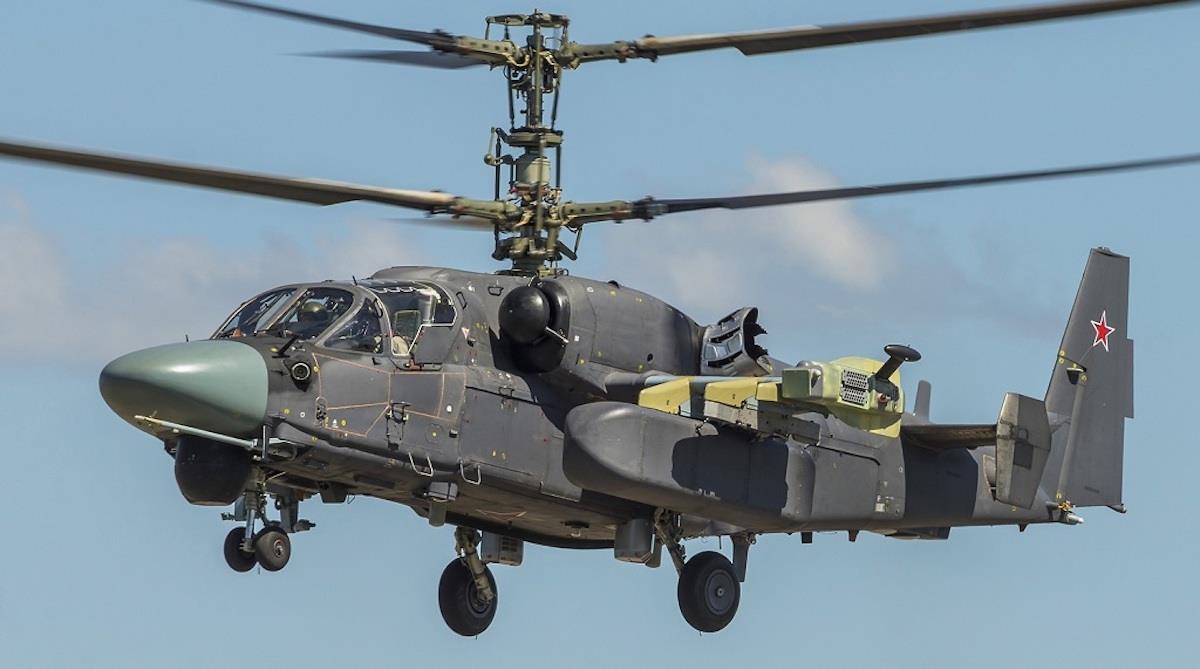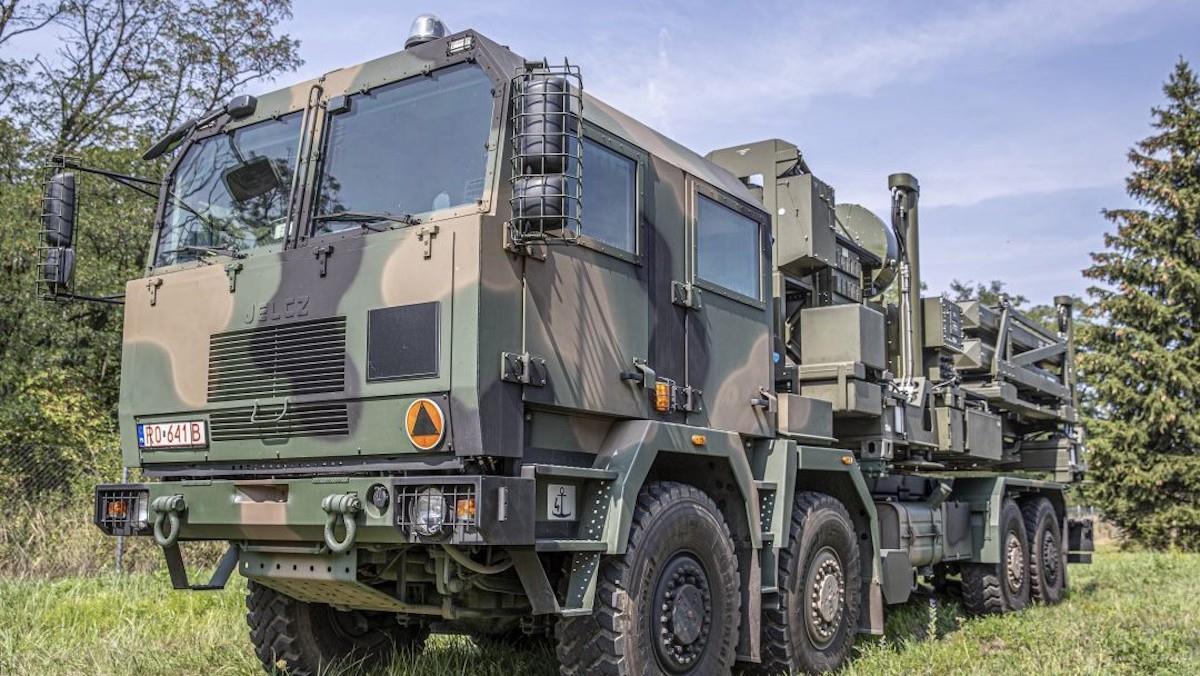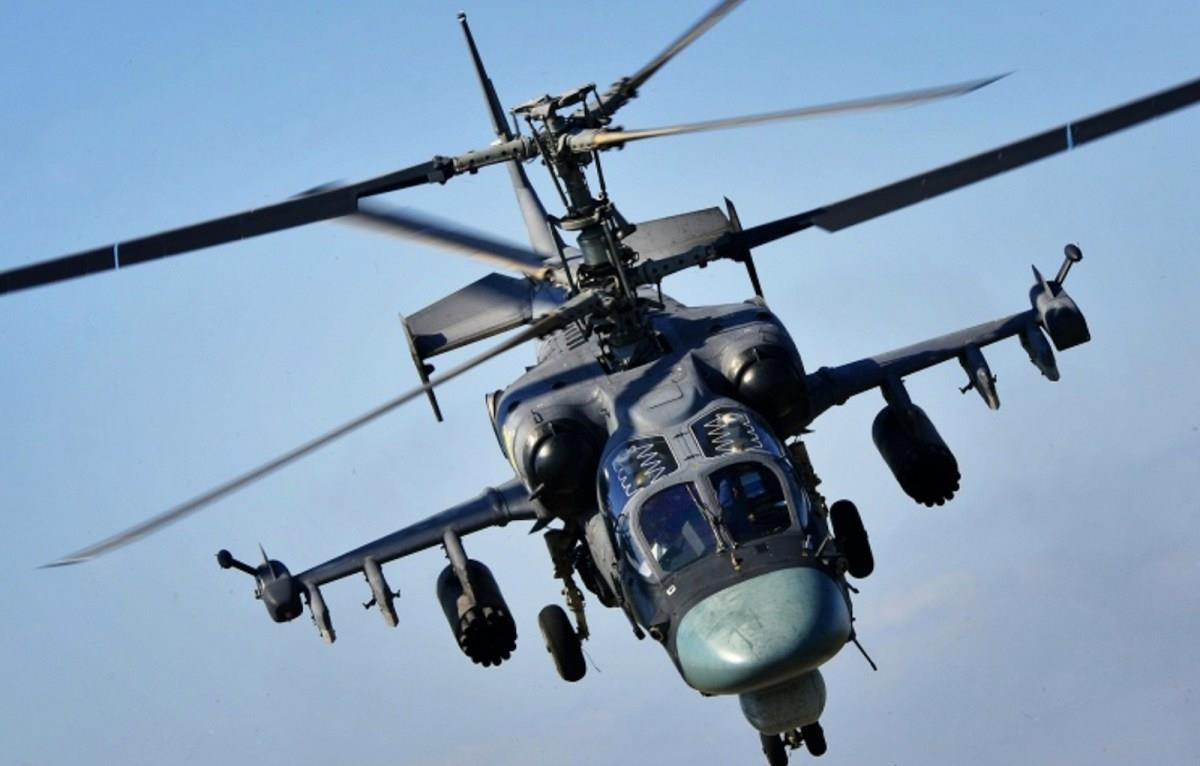Eurasian Times states that Vitebsk-25 consists of an infrared (IR) missile tracker and laser countermeasures, augmented by a flare dispenser to blind IR missiles. It also says the system can detect and jam threats across 120 degrees azimuth and 60 degrees elevation, jamming radar frequencies from 4 to 18 gigahertz.
In describing how the system works, Eurasian Times says Vitebsk-25 operates in passive and active modes. In passive mode, the report notes that the system scans an area with radar, radar and laser warning receivers, and IR and ultraviolet (UV) sensors, dispensing chaff and flares automatically if a missile launch is detected.
In active mode, the source states that Vitebsk-25 directly engages the IR seeker head of an incoming missile, possibly blinding it by laser.
The system may also be effective against multi-mode missiles, as the source states it uses powerful jamming to disrupt radar-guided missiles, forcing them to shift into IR guidance and go after decoy flares.
Comparable Western systems may include the Common Infrared Countermeasures (CIRCM) suite installed on over 100 US Army helicopters.
Latest stories

china's support for myanmar driven by self-interest

europe wants solar power sovereignty from china

megawati making moves to tilt indonesia's election

us is losing asia's multilateral trade game
the aviationist notes in a march 2023 article
that CIRCM works by receiving“an angular bearing handoff from the missile warning system (MWS), employs a pointing and tracking system which acquires the handed-over threat and tracks the incoming missile during and after motor burnout. CIRCM jams the missile by using modulated laser energy in the missile seeker band, thus degrading the tracking capability of the missile, and causing it to miss the aircraft.”
An attack helicopter is one of the most potent armor-killing weapons on the modern battlefield. Frank Barnaby estimates
in the book the role and control of weapons in the 1990s
that one helicopter in battle should be able to destroy 17 times its value in tanks before being killed, excluding the cost of supporting and maintaining the tanks.
Russia operates several attack helicopter models including the Mi-24, Mi-28, and Ka-52.
a november 2022 report by the royal united services institute (rusi)
notes that Russia initially used its attack helicopters to conduct aggressive hunter-killer sorties up to 50 kilometers behind Ukrainian frontlines but was forced to change tactics due to heavy losses.
Of Russia's attack helicopter fleet, the RUSI report mentions that the Ka-52 has seen more intensive use than other models, noting that may be due to its use of the 9K121 Vikhr anti-tank guided missile (ATGM), which has a rear-facing laser receiver compared to traditional ATGMs.

A Russian Ka-52 attack helicopters. Photo: Twitter / The Aviationist
The report says that guidance configuration makes the 9K121 Vikhr“look back” to the launching helicopter to“see” the laser guidance beam from the latter, making it almost impossible to jam in flight and cheaper than comparable models.
In terms of losses, Kyle Mizokami notes
in a may 2023 popular mechanics article
that at the time of his writing, Russia has lost 62 attack helicopters, with up to 30 Ka-52 helicopters downed, representing 30% of Russia's entire fleet of the type.
Mizokami ascribes those losses to small arms fire, man-portable air defense systems (MANPADS), and anti-aircraft guns, with attack helicopters lacking the speed of attack jets and the armor protection of tanks, making them vulnerable targets.
However, a combination of depleted Ukrainian air defenses and improving Russian tactics may have changed the situation in favor of Russian attack helicopters.
Jordan Cohen and Jonathan Ellis Allen
noted in a february 2023 cato institute article
that Ukraine succeeded in the air war early in the conflict by denying Russia air superiority using short-range air defense (SHORAD) systems.
However, Cohen and Allen mention that Russia has changed its approach, using relentless missile and drone attacks to force Ukraine's previously undetectable mobile air defenses to reveal themselves by firing at numerous low-value targets, making themselves vulnerable targets, and wasting precious missile stocks.
Ukraine may be facing a shortage of SHORAD systems.
in an april 2023 center for strategic and international studies article , Mark Cancian notes that before the war, Ukraine only had a small number of SHORAD systems, which are most likely exhausted by now.
Although Cancian mentions that Ukraine has received large numbers of SHORAD systems from the US, France, Germany, and Poland, he says that US Joint Staff documents leaked that month show Ukraine has just 190 US-made Stinger missiles remaining, indicating lots of gaps in Ukraine's frontline air defenses.
in an article this month , the Warzone notes that Ukraine's Deputy Minister of Defense of Ukraine, Hanna Malyar mentioned the threat posed by Russia's air and artillery superiority to its ongoing counteroffensive.
Specifically, the source notes that Ukraine seemingly lacks forward-deployed mobile SHORAD systems, creating dead zones wherein Russian attack helicopters can operate freely against Ukrainian armor.

A SHORAD system headed from Poland to Ukraine. Image: Facebook
the uk ministry of defense (mod) mentioned this month
that Russia had reinforced its attack helicopter force in southern Ukraine since the start of Ukraine's counteroffensive.
The UK MOD says that 20 extra Russian attack helicopters have been deployed to Berdyansk Airport, 100 kilometers behind the front line. It also notes that Russia may have already gained a temporary advantage with attack helicopters firing longer-range missiles against ground targets.
Apart from that, Russia has been deploying new hunter-killer team tactics for its attack helicopter force.
David Axe notes
in a february 2023 forbes article
that Russia is deploying its Ka-52s and Mi-28s to complement each other's countermeasures suites. Axe mentions that the Ka-52 has countermeasures against laser and IR-guided missiles.
In contrast, the Mi-28 has countermeasures against radar-guided missiles, enabling each other to defend against various aerial threats.
Like this:Like Loading... Related




























Comments
No comment